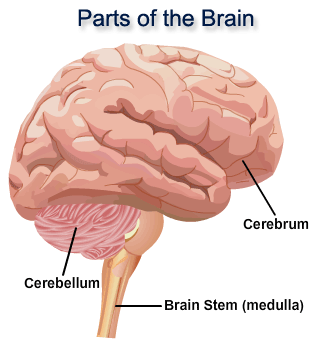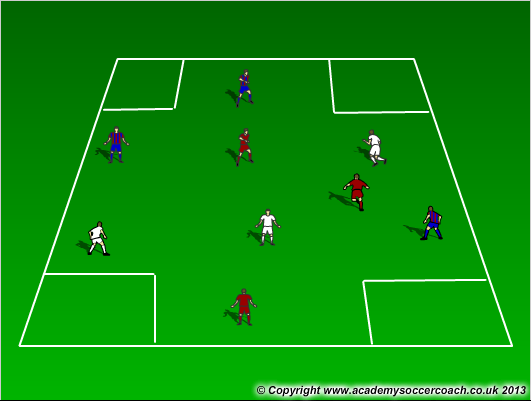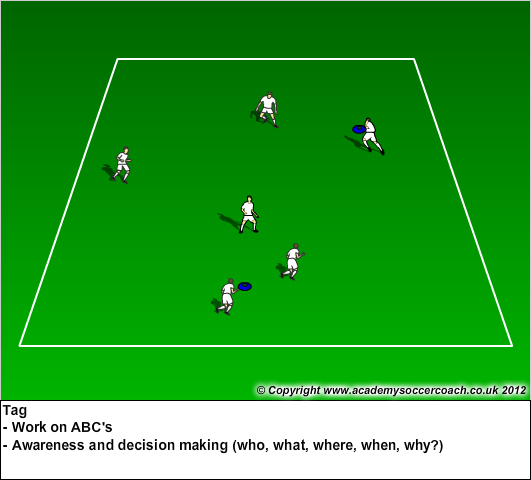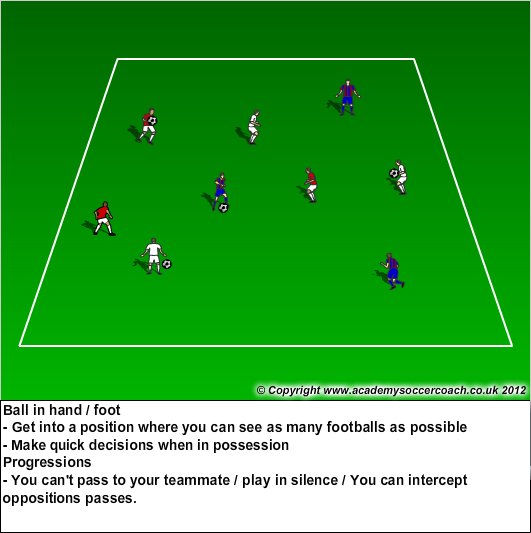
How do you teach awareness? Increasing awareness on the pitch is designed to help players think more quickly and be able to make better and quicker decisions. It is important that players know what options they can have before they receive the ball.Encourage players to look before they receive the ball to be aware of their options in advance and then they can decide which one to use at any given moment. This is the raw ingredient we should be trying to establish in our players’ minds above all else.
Everything you attempt to do with your players in coaching sessions should stem from this basic philosophy. The main point is the quicker the young player can see the options and the more options they can see before the ball arrives at their feet, the better chance they have of choosing the one that will bring success to the team.
- Head-up - Avoid looking down at the ball and not observing what is around you.
- Look before receiving - Assess all the options before receiving the ball, where are my team mates/where are the opponents?/where is the space to pay the ball into?/ therefore what is the correct decision to make before receiving the ball.
- Body stance Open - Do this by turning “ side on “(half turned) for greater awareness and by taking an angle of support that allows you to see most (if not all) of the other players on the pitch. Foot preparation is also important as too many players are flat footed and not ready to receive the ball and hence give up possession. Players can execute several options, if necessary, if their feet are well prepared(heels off the ground)
- Communicate to help the receiver:
Use brief phrases like “man-on”, “turn”, and “time” so that the player on the ball know whether or not they are about to be pressured by an opponent. This can happen when the ball is played in straight lines. But when the ball is played at angles and players move at angles then communication should be through eye contact. The look will help you because you will not always get help from team mates with a shout, so you need to help yourself.
All 4 above key points need to happen before you receive the ball. But it is the player who has to make this happen. We as coaches can show you, we can encourage you and we can guide you but it is the player him-self who has to make this happen. He must practise “seriously” the above coaching points at every training session. Otherwise the passing will be predictable and simple but never creative and inventive to make the difference in the game. The degree of improvement the player makes depends on his commitment. (Repetition and decision making in functional and small sided games)Results will not happen over night and players have to be patient in learning this approach but in the end they should benefit from improved decision making that allows them to work ahead of the opposition. Overtime and with much practise the player learns to assimilate each observation more quickly until eventually they all combine in the mind into one.
How to make this work as a Team;
To make this happen the players “off the ball “ must be in tune with what the player “ on the ball “ is trying to do and must move to help them. This must be done in terms of communication (through eye contact, verbally) and how the player positions (half turn) and foot preparation.
If this does not happen then all the good work of the player on the ball may be wasted because there is no one in the open play to pass the ball to in the next phase of play. The player on the ball may not be able to play a creative or penetrating pass and may in fact have to play the ball square or back to a team mate. “Off the ball” players need to be in tune with what the player “on the ball” is trying to achieve. Build up play leading to creative and incisive passing will not happen if the player on the ball has no options due to poor support by his team-mates. You have to work in tandem by knowing where and when to move too off the ball.
Technique & Skill;
You may give the ball away with a poor technique ( a pass not accurate and mistimed ) but the decision you made (skill factor ) was the correct one. Your understanding of where and when to pass the ball was correct but you need to work on How (technique) to pass the ball accurately. You may have very good technique, be an accurate passer of the ball but your selection of pass means you give the ball away too much. You need to improve your skill, your decision making of where and when to pass the ball.
Thought Process that a Player goes through to develop Awareness/Anticipation and Imagination
No 1; Look before receiving/Body position side on/Communicate/Technique/Skill
This is one touch play, technique been the first and only touch.
No 2; Look before receiving/Body position side on/Communicate/Control/Technique/Skill
This is a minimum of two touch play; control is the first touch now.
No 3; Body position side on/control/technique/look before receiving/communicate/skill.
The Look part is too far down the sequence of events. This is one of the biggest problems I see in football to day is that when there is a moment to pass the ball quickly the moment is lost because the player isn’t yet aware of this option, he is too busy controlling the ball and then looking to see where the players are. Too Late;
Many players are at number three and will stay there unless they are prepared to work hard to achieve the goal of getting to number one and two consistently in the thought process that a player has to go through. In game related practices young players have to work very hard mentally to do this (look before receiving) every time you are receiving the ball or moving off the ball. Then as the player improves it will become a natural part of his make up and he will be looking around whether he gets the ball or not on the chance he might at some stage be involved in the build up. Also, by looking away from the ball, even when it is clear the player is not going to get it, he will learn to move off the ball better.
Particular attention must be paid to the first touch of the ball by the player ( this is crucial ).
Good Technique in order to be able to pass the ball accurately and at the correct pace in order to maintain possession. A tactical understanding (skill ) in order to make the correct decision among the various options that a player has in front of him at any one time (where the technique becomes a skill) including an understanding of where to move to “ off the ball” to provide support.
If we look at the Thought Process no 1 that a player goes through to develop Awareness/Anticipation we can see already the improvement that’s been made. For example, if this player only has enough time to pass the ball with one touch because he’s been closed down he needs to anticipate where his pass is going before the ball arrives at his feet. By improving anticipation the player becomes faster with his overall decision making.
In Thought Process No 2 the player, aware that he has time on the ball, can control it and decide where and when to pass the ball.
If coaches can design coaching sessions which encourage a young player to practice both their Awareness/Anticipation and Decision making skills, the individual will be experiencing challenges that players must overcome to perform skilfully in games. Structuring practices in a way that challenges players to think about ‘when’, ‘where’ and ‘how’ to execute a technique means that Awareness, Anticipation and Imagination is also taking place in this practice.
Functional practices and small sided games are appropriate and “can make things happen “in this programme. Functional Practices can be (3v1), (4v2 ), ( 5v2 ), ( 4v4 + servers ) etc. You can work for two minutes and rest for one. The Functional Practice is the same tempo as the match with defending players working intensely to win the ball back. This is very important and why it has to be work/rest structure. You need defenders pressing with intensity other wise you cannot judge if improvement is taking place. Play with no conditions on touches - Players must decide. Then as the number of touches is reduced, the ability needed to anticipate the next pass and where it should go increases. During the water breaks coaches can give feedback to players how they are doing, players on and off the ball looking around before receiving the ball and making the correct decisions. Use the functional practices and small sided games for players at all ages – just change size of area – smaller as players improve and move up the age groups.
Find below some warm up sessions that you may find helpful.



I hope you found the above article helpful, please feel free to resteem or upvote or share with anyone who you think can enjoy the above article.
Really good detail in the blog
Downvoting a post can decrease pending rewards and make it less visible. Common reasons:
Submit
Always appreciate your feedback @tarran
Downvoting a post can decrease pending rewards and make it less visible. Common reasons:
Submit
Congratulations @myfootball! You received a personal award!
Click here to view your Board
Downvoting a post can decrease pending rewards and make it less visible. Common reasons:
Submit
Congratulations @myfootball! You received a personal award!
You can view your badges on your Steem Board and compare to others on the Steem Ranking
Vote for @Steemitboard as a witness to get one more award and increased upvotes!
Downvoting a post can decrease pending rewards and make it less visible. Common reasons:
Submit